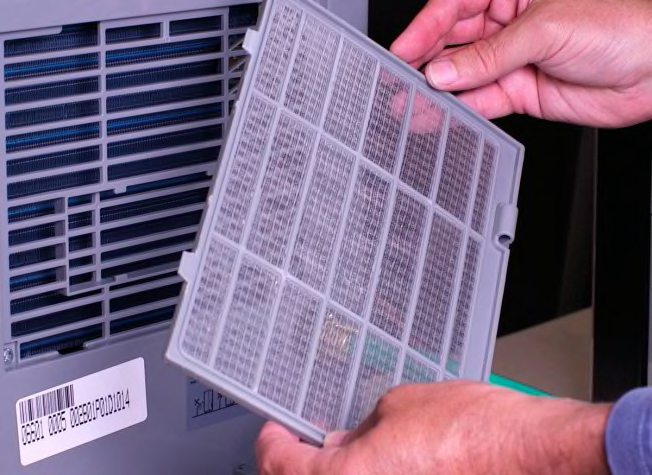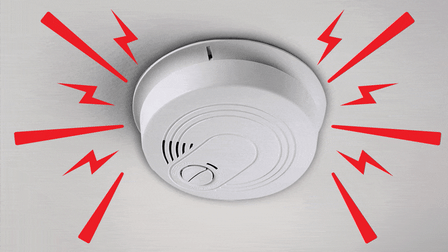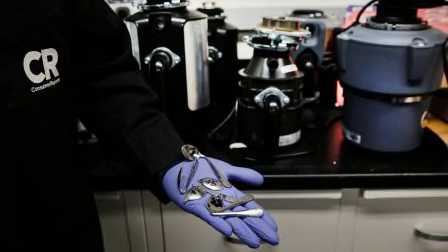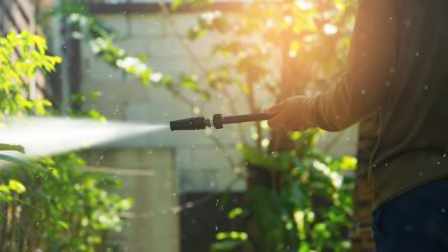What Filters Should You Change in Your House?
It takes diligence to keep indoor air and water clean. Here's how often you should replace 12 filters.

Dryers that don’t dry, vacuum cleaners that don’t clean, and air conditioners that don’t cool might be plagued by the same problem: a clogged or dirty filter.
To keep many appliances in tip-top shape, you have to clean or replace a filter. In fact, that’s the first thing to check when something seems awry, according to our test engineers.
- Water Filters for Your: Refrigerator Dishwasher Water Filtration Devices
- Air Filters for Your: Air Purifiers Range Hood Microwave Dryer Vacuums Dehumidifiers Air Conditioners Central AC or Heating Gas Furnace
But it’s not always an easy task. When Consumer Reports tests vacuums, air conditioners, dishwashers, and other appliances, filter replacement is one of the things we consider as part of our ease-of-use score.
Filtering Water
Refrigerator
If you have a water dispenser or an icemaker in your refrigerator, you’ll need a filter to remove small particles or contaminants, such as lead and chlorine, and impurities that cause bad tastes or odors. The filters have to be replaced periodically following the guidelines in your owner’s manual, often twice per year. If your refrigerator’s water supply line uses a filter, replace that, too.
For more on refrigerators, see our refrigerator ratings and buying guide.
Dishwashers are equipped with either an automatic filter that grinds food particles so that they wash away with the wastewater or a manual filter that you need to clean yourself. The grinders can be noisy, so quiet dishwashers often have manual filters. They should be cleaned at least every three to six months depending on how often you use your dishwasher. Some manufacturers recommend cleaning the filter every two or three weeks, so check the owner’s manual.
“Dirty filters won’t damage a dishwasher but will affect its performance,” says Larry Ciufo, who tests dishwashers for Consumer Reports. Be sure the heating element has cooled down before you reach into the machine.
For more on dishwashers, see our dishwasher ratings and buying guide.
Water filters have different lifespans depending on the type. Typically, the filter in a carafe water filter is good for 40 gallons, but it’s usually up to you to keep track because few carafe water filters indicate when it’s time to change the filter.
Failing to change the filter periodically can result in water that’s dirtier than before you filtered it. Our water filter ratings include the yearly filter-replacement cost for each model; it ranges from $30 to $180 annually.
Some water filters connect to your water line under the sink or are mounted on your faucet to filter out sediment, lead, and other contaminants. The filters should be changed periodically, usually after 100 gallons, or about four months. Some of these filters have built-in indicators that let you know when it’s time. Check the manufacturer’s instructions for your model’s recommended maintenance schedule. The replacement filters range from $40 to $400.
For more on water filters, see our water filter ratings and buying guide.
Filtering Air
Air Purifiers
Most air purifiers have a filter indicator (often a light) that alerts you when the filter should be checked and possibly replaced. Though you can simply wipe down most prefilters, the main HEPA filter should be replaced about every six to 12 months, or as your manual advises. We factor this expense—new filters can cost between $50 and $100 or more annually—into the annual costs listed in our air purifier ratings.
Keep in mind that some newer air purifiers will notify you when it’s time to change a filter based on how much you’ve used the unit, and others base their alert on a set number of hours.
“Most filter replacement interval suggestions are based around an assumption of 24/7 use, so if you are using yours less frequently, it may be worth inspecting your filters to see if it’s time for a replacement,” says CR’s Misha Kollontai, who oversees our air purifier tests.
For more on air purifiers, see our air purifier ratings and buying guide.
Some range hoods have filter maintenance lights; if not, check and clean this filter every one to three months, or more often if you cook frequently. Slide the filter out of the range hood and place it in a sink filled with hot water and a good degreasing soap. Let it soak for at least 10 minutes. Use a sponge to carefully remove any remaining grease or debris. Then air-dry and reinstall. If a good cleaning doesn’t get the grime off, you’ll need a replacement, which usually costs about $10 to $15.
For more on range hoods, see our range hood ratings and buying guide.
Over-the-range microwaves also have filters that need attention (unlike countertop units, which don’t). A filter with grease buildup can result in a fan that can’t exhaust properly or capture cooking fumes, leaving a sticky film on appliances and kitchen walls. To clean the filter, wash it in warm, soapy water at least twice a year or more often if you cook at home most nights. Some microwaves have dishwasher-safe filters.
For more on over-the-range microwaves, see our microwave oven ratings and buying guide.
A dirty lint filter can extend drying time and lead to lint buildup in the dryer’s cabinet and duct. So in addition to cleaning the lint filter between loads of laundry, also inspect the duct and cabinet every few months to check for lint buildup, which poses a fire hazard. Some newer dryers have blocked vent sensors that detect reduced airflow, but not all the sensors performed well in our clothes dryer tests, making a visual inspection the safest bet.
For more on dryers, see our dryer ratings and buying guide.
Failing to change the filters in your vacuum cleaner may cause it to lose suction or worse, spew dust back into the air. Changing the filters regularly, especially on bagless models, saves work and aggravation. Frank Rizzi, who tests vacuums for Consumer Reports, says that every model is different, so consult the owner’s manual to see how often the filter should be changed and whether it can just be washed instead.
For more on vacuums, see our vacuum ratings and buying guide.

Though your dehumidifier is easy to forget about—especially if it’s out of sight in the basement—most dirty filters can be easily cleaned in just a few minutes rather than replaced. A quick cleaning will improve your home’s indoor air quality and the machine’s performance. This is especially important to do when humidity levels rise above 50 percent, which can lead to the growth of dust mites, mildew, and mold on the filter. (If you see any of those, it’s time for a new one.)
For more on dehumidifiers, see our dehumidifier ratings and buying guide.
All window units have a filter, and many come with a filter indicator that signals when it needs cleaning to keep cooling your home efficiently. If yours doesn’t, check the filter at least once a month during periods of heavy use or year-round if you live in a warm climate. Remove the filter and use your vacuum’s upholstery brush to suck up any heavy dirt, then wash the filter using a mild solution of dishwashing liquid and warm water. Wait until it’s dry to reinsert. “Some filters are easier to remove than others, so consult the owner’s manual for guidance,” says CR’s Christopher Regan, who oversees testing for room air conditioners.
For more on air conditioners, see our air conditioner ratings and buying guide.
Central Air Conditioning and Heating System
If you have a combined forced air heating and cooling system, follow the filter manufacturer’s recommendation on how often to change it. In general, the thicker the disposable filter, the less often it needs to be changed. (The models we test last between three and 12 months.) “A vast majority of the purifiers we recommend use a nonreplaceable mechanical filter, but some include washable pre- or post-filters that require regular cleaning, so make sure you keep up with this maintenance as well to maximize the efficiency of your purifier,” Kollontai says.
For more on air filters, see our air filter ratings and buying guide.
As with a central AC system, a dirty filter in a gas furnace can restrict airflow, leaving the equipment struggling, so replace a disposable one as the manufacturer advises. (Most models will need to be changed roughly every three to 12 months.) When you remove the old filter, take note of the size and the arrow that indicates the direction of the airflow; both should be printed on the filter. One of the most common mistakes people make while doing this chore is putting in the new replacement filter backward.
For more on gas furnaces, see our gas furnace brand reliability and buying guide.




















